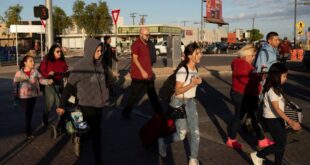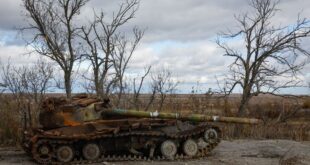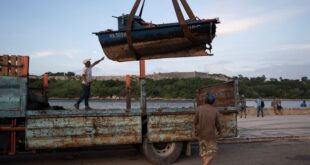CHIURI, Nepal (Reuters) – Sobbing relatives of victims from Nepal’s worst earthquake in eight years sat with the bodies of their loved ones on Sunday as rescuers looked for people who could still be trapped in the rubble of collapsed buildings.
Surrounding about 10 bodies shrouded in white cloth in a tarpaulin tent, relatives prepared garlands of marigolds for the Hindu cremation rites later in the day.
Baljit Mahar, 32, sat cross-legged by the body of his seven-year-old son, one of 157 people killed in the late Friday quake in the west of the Himalayan nation, according to the authorities’ latest count, along with about 250 injured.
“We could not save him, while all the other six members of the family were able to rush out as soon as the earthquake jolted us from our sleep,” Mahar told Reuters in the remote village of Chiuri in the hilly Jajarkot district.
He pulled the body from the crumbled facade of their single-storey mud and stone house.
The quake had a magnitude 6.4, Nepal’s National Seismological Centre said, while the U.S. Geological Survey measured it at 5.6.
It was the country’s deadliest since 2015, when about 9,000 people were killed by two quakes that reduced whole towns and centuries-old temples to rubble and destroyed more than a million houses, at a cost of $6 billion to the $40 billion economy.
After Friday’s quake, thousands of buildings in Jajarkot and neighbouring Rukum West district have collapsed or developed cracks making them unliveable.
“All my belongings and clothes are under the debris,” Mahar said. “I have been left without anything.”
Nepal Police spokesperson Kuber Kadayat said the authorities would keep looking for survivors, then quickly address relief and rehabilitation for the affected families. The government treat the injured free of charge.
Survivors said they heard the loud noises of collapsing buildings soon after the quake.
“There was a big plume of dust and we could not even breathe easily or see anything,” said Shanta Bahadur B.K., watching over the bodies of six family members. His mother was being treated for injuries at a hospital in the nearest city, Nepalgunj.
“I am shocked to lose almost all my family members,” said the 41-year-old, who farms millet and corn. “It is an unbearable pain, but I must face and bear it. What to do?”
The relatives will use the area’s single cremation ground, said B.K, “but we will have separate cremation ceremonies in accordance with our tradition and culture.”
(Reporting by Navesh Chitrakar and Yubaraj Sharma in Chiuri; Additional reporting and writing by Gopal Sharma; Editing by William Mallard)
 BeritaKini.biz Berita Viral Terkini di Malaysia
BeritaKini.biz Berita Viral Terkini di Malaysia





